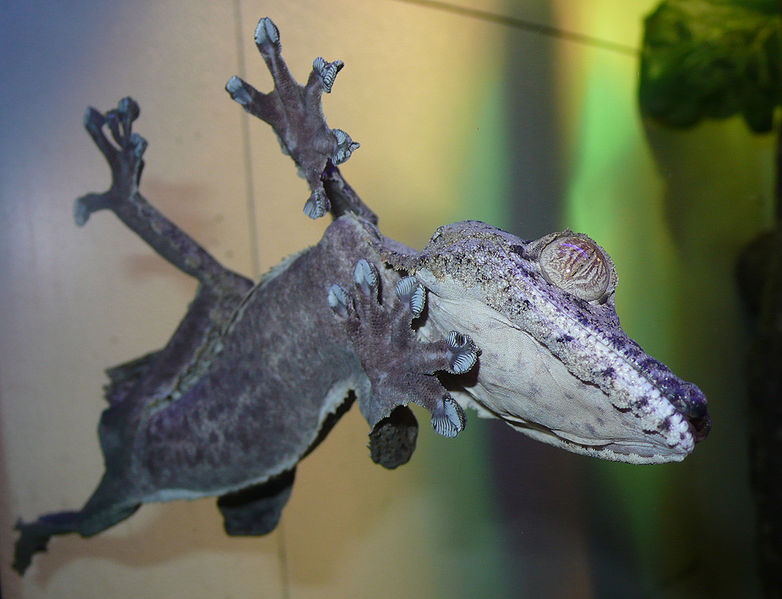We're open daily! View holiday hours
Science News
Can't Miss Headlines
April 25, 2014
by Molly Michelson

Geckos have always inspired us here at Science Today. Well, mostly their toes. It’s not a fetish, it’s science, and it has a name: Van der Waals force. The molecules in the hairs in the geckos’ feet interact with molecules on surfaces, allowing the lizards to adhere to almost anything. Scientists are looking to replicate this for robots and other uses, and have succeeeded to some degree. Now, scientists at the University of Massachussetts at Amherst have developed Geckskin, an adhesive device that builds on “draping adhesion,” which derives from the gecko’s integrated anatomical skin-tendon-bone system, powerfully adhering and un-adhering to a wide variety of surfaces found in most homes such as drywall and wood. “Imagine sticking your tablet on a wall to watch your favorite movie and then moving it to a new location when you want, without the need for pesky holes in your painted wall,” says engineer Al Crosby, co-author of a new study on Geckskin in Advanced Materials. Sounds good to me!
Speaking of bio-inspired design… In the video we posted earlier this week, we mentioned the power and speed of the mantis shrimp. Its punch is faster than a bullet and able to break aquarium glass (or clam shells). But how does the stomatopod’s club not get harmed in the process? In a 2012 paper, scientists determined that the club is composed of several regions, including an endocuticle region. The endocuticle is characterized by a spiraling arrangement of mineralized fiber layers that act as shock absorber. Each layer is rotated by a small angle from the layer below to eventually complete a 180° rotation. The same researchers are now mimicking this endocuticle design, making composites that could be used for a variety of applications, including aerospace and automotive frames, body armor and football helmets. “The more we study the club of this tiny crustacean, the more we realize its structure could improve so many things we use every day,” says UC Riverside’s David Kisailus, one of the authors on a shrimp mantis inspiration paper published this week.
Finally, here in San Francisco, we’re use to gender-bending headlines, but nothing really prepared us for Neotrogla, the insect genus where the females sport the penis (technically, a gynosome) and the males, the vagina-like organ. These fly-like, flea-sized arthropods live in Brazilian caves and copulate for 40 to 70 hours, during which the female mounts and inserts her genitalia, locking it tightly into the male, and then grabs the semen and some nourishment along with it. Scientists speculate it’s the nourishment that fed this adaptation in Neotrogla—the dry caves aren’t always plentiful, food-wise. It also makes the females the competitors of the species. The study was published last week in Current Biology.
Image: TimVickers/Wikipedia